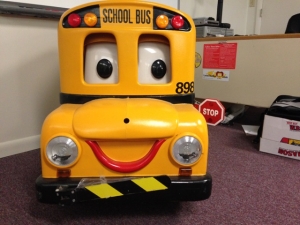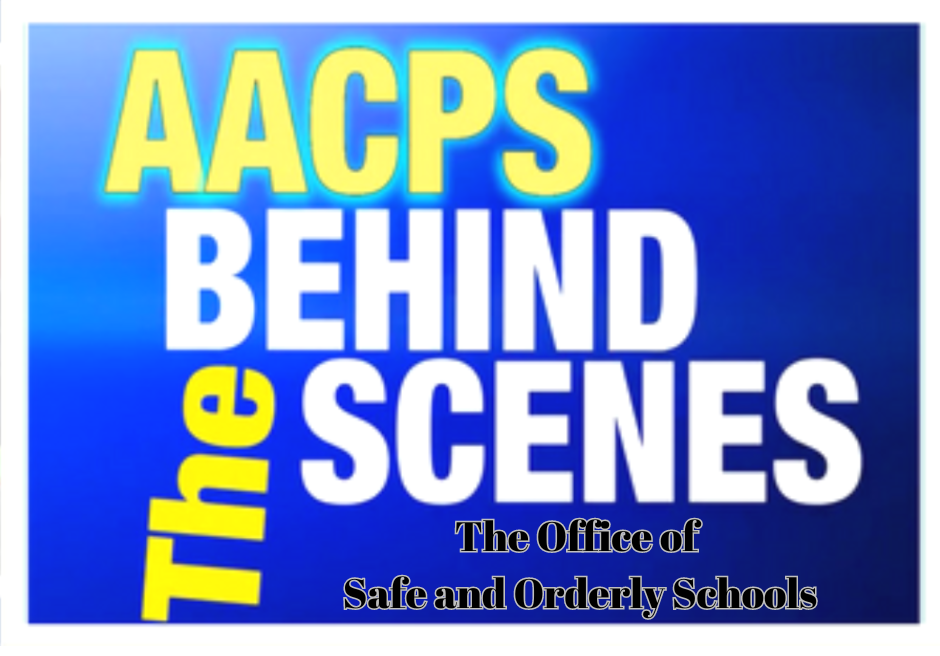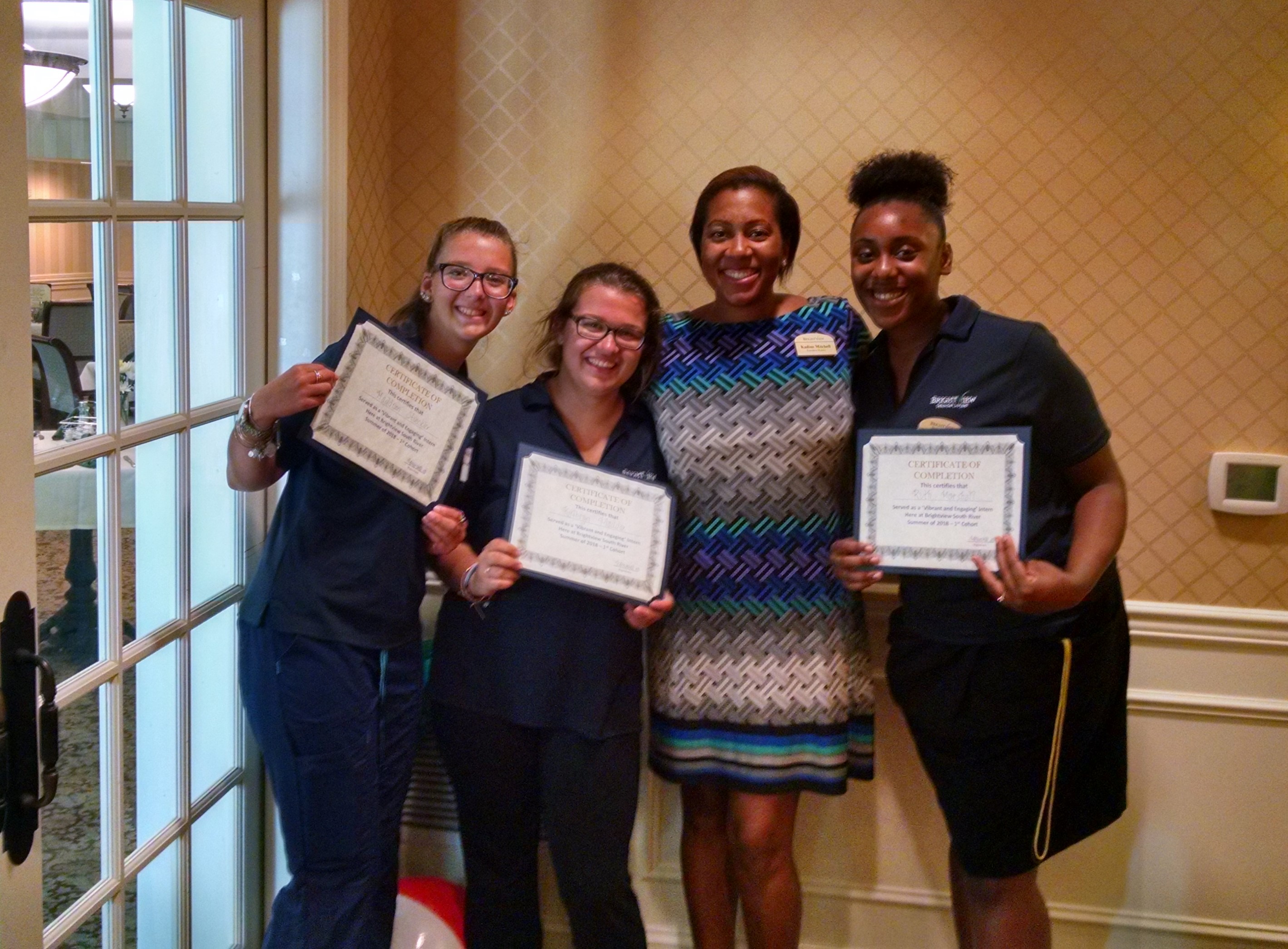100 Miles, 250 students
At 5:55am, Lakesha “Kesha” Matthews slowly walks around the perimeter of a school bus, making sure all lights are working properly, the tire pressure is safe, and that the sides and underside of the vehicle are clear. She steps onto the bus to check the windows, side doors, and roof hatch to ensure all emergency exits are functioning properly. Part of the pre-trip inspection she performs twice a day as a bus driver in Anne Arundel County, the inspection reassures Kesha that the vehicle will allow her to complete her primary responsibility: transport students on the road safely. After another minute checking dashboard controls, she pulls out of the bus lot onto the road towards Annapolis.
Across the county, this scene is repeated over 500 times as hundreds of bus drivers and attendants prepare to pick up nearly 58,000 students for school. To meet this high volume every day, Anne Arundel County Public Schools (AACPS) outsources much of its transportation to 19 different third-party contractors. Selected through an annual bid process, these contractors own and service their own buses and transport the vast majority of general population students in the county from Early Childhood Intervention (ECI) through grade 12.
At 6:40, Kesha is pulling up to her first stop: “Good Morning, Good Morning, Good Morning,” she says to each high school student who climbs on board. When everyone has taken a seat, she pulls back onto the street, simultaneously watching the road while trying to keep an eye on the rowdy students in the back. By 6:44, she is at her next stop, greeting a new group of students waiting for the bus doors to open; by 7:03, she pulls up to Annapolis High School and the students pour out to meet their friends and start their day. As the students are unloading, she is able to see her daughter—her oldest of six children ranging from elementary through high school—in the crowd entering the building. In addition to driving almost 9 ½ hours each day, Kesha is going back to school to get a nursing degree, which sometimes keeps her away from her family more than she would like. But a benefit of driving, Kesha says, is being able to stay in touch with the administration at her children’s school as well as the other drivers who are transporting her kids.
After the last student is off of her bus, Kesha has just enough time to walk through the bus and check for anything a student may have accidentally left before pulling back onto the road to be at her next stop by 7:33. With over 4,800 miles of roadway in Anne Arundel County, most drivers are constantly on the move from one stop to the next during their morning and afternoon runs. Over the course of Kesha’s morning, she will make fourteen community stops to transport a total of 250 students to one high school, three elementary schools, and a special center. This route—scheduled down to the minute by AACPS Transportation Specialists—will require Kesha to drive 100 miles each day. (To see an example of the “tiered” structure of a typical AACPS bus route, click here).
After dropping off her last group of students at J. Albert Adams Academy, Kesha pulls her bus into the parking lot at Annapolis Middle School. On most days, Kesha uses her afternoon break to either study for or attend classes at Bowie University. Today, however, Kesha will be joining a few dozen other drivers at an in-service training. As required by Code of Maryland Regulations (COMAR), all bus drivers must attend at least six hours of in-service training each year. These regular meetings provide an opportunity to discuss student behavior and challenges faced on the road, building on the strong foundation of training that all drivers and attendants received when joining this transportation team.
“It’s all about transporting the children”
In a portable classroom (also known as “learning cottage”) behind the Center of Applied Technology-North, Safety Manager Jeanie Porter is talking to a group of two dozen newly hired bus drivers and bus attendants (a second person placed onto some buses to assist students with special needs). She points to a PowerPoint slide and gives the class a possible scenario: A bus begins to pull through a green light when a car coming from the side runs through a red light and hits the front corner of the bus. The question to the class: is the bus driver at fault? And is the accident preventable? Together, the group discusses who had right of way (the bus) as well as what the driver could have done differently to prevent the accident, such as slowing down when coming to the intersection.
Throughout the classroom, the group of trainees is diverse, mirroring the diversity of drivers and attendants across the county. While many drivers begin driving as the start of a new career, some are parents looking for a second or part-time job, and many are retirees—both from schools and outside organizations such as NASA—looking for a way to stay involved with students. Even though the majority of these drivers are hired by one of the county’s bus contractors, all must complete four days of classroom training with an additional 30 hours of training behind the wheel before they can earn a license and become certified to drive in Anne Arundel County. With over 800 bus drivers and over 250 bus attendants (including substitutes) in the county, this is no small task and each year, two AACPS Driver Instructors and one Safety Manager train over 200 people. This upfront investment, however, gives drivers the knowledge and skills they need to stay in the county for years; 41% of drivers have been with Anne Arundel County for over 10 years, with many drivers staying with the county for over 20 years.
Flipping through each trainee’s 50-page manual, much of the content relates to the operations of driving a commercial vehicle, from local transportation laws and state policies, to performing a pre-trip inspection and the correct way to check all mirrors. But while the logistics of driving a bus are important, the heart of the training is summed up by the opening sentence of the manual: “It’s about transporting the children.” To prepare for certification, each class will practice procedures for loading and unloading students, gain first-hand experience with the safety equipment provided on the bus, and discuss the limited behavioral management techniques drivers can use to deal with disruptive behavior. Whether reacting to avoid a car that suddenly cuts in front of the bus or calming down elementary students screaming because of a spider on the window, a driver’s attention is always divided between the road in front and the students behind. This comprehensive training allows drivers and attendants to safely navigate the road outside while creating a fair, firm, friendly, and secure environment within the bus.
More than just a driver
Billy “Mr. Billy” Hix pulls up to Central Elementary School and turns off the bus. He stands up to stretch his legs before the afternoon bell rings. Marie Smith, the bus attendant, uses the time to finalize her attendance report of who was and was not present at each stop for the three other schools they serviced that day. She makes a note that today they did not stop at Central Special—Sarah, a Central Special student who struggles with respiratory problems and uses a wheel chair, was out sick today and, because today is a Wednesday, Jacob, who only attends Central Special two day a week, would also not have been there. Marie comments how much quieter the drive was without Sarah’s friendly personality and Billy agrees. After driving Sarah for over five years, he has become close with her parents and is in frequent contact with them to get the most up to date information on Sarah’s condition and on any upcoming changes to her schedule.
This is an AACPS-owned bus, one of the 60 operated daily by Anne Arundel County Public Schools. While approximately 90% of buses in the county are owned by contractors to service general education students, 10% of buses are owned by AACPS to transport special education students. Because these buses transport students with unique and diverse needs, they are equipped with lifts, wheelchair hooks and are staffed with both a driver and a bus attendant. AACPS-owned buses also often transport a much lower number of students on each run to allow the driver and aide to more closely manage their student’s individual needs, from physical disability to behavioral challenges to intellectual disabilities.
When the afternoon bell at Central Elementary School rings, Claire and her teacher come out of the school right on schedule. As Marie helps her board the bus, Claire, who has Down syndrome, asks where Sarah is. Billy explains that she is home sick today and Marie asks Claire about her own day at school while she settles into her favorite seat in the middle of the bus. Being able to build these relationships with students, Marie says, is what being a driver or aide is all about: “Just seeing the kids, and helping them—they make my day too.”
When Claire is settled, they set off for southern Anne Arundel County. Central Elementary is not Claire’s neighborhood school, but it is the elementary school best able to meet Claire’s needs and so, following federal law, AACPS provides transportation. When Claire gets off the bus to meet her father, Marie waves goodbye and says she will see Claire on Friday—because of Claire’s evening karate class, she does not ride the bus on Thursdays. On a typical day, Billy and Marie would continue traveling down to a neighborhood near the Calvert County line to drop off Sarah, but today they turn around to head back to Annapolis, about 40 miles short of their average 150 mile daily drive.
For many members of the community, the driver is seen as the person operating the vehicle that will take a child from home to school and back again—only in their students’ lives from the time they leave the house until the time they arrive at school. But, whether hired by AACPS or a contractor, drivers and attendants are a part of our students’ educational day. As the first person a child sees when they leave the house for school, drivers and attendants set the tone of the day with a pleasant “Good Morning;” working with teachers and parents, they know who is having a good day and who needs a little more support; and offering a friendly wave at the end of the day, they are often the last person a student sees before returning home. While bus drivers and attendants get into this business because of their love for driving, they come back each year because of their love for children.
Note: Students’ names have been changed below to protect their safety and privacy.













